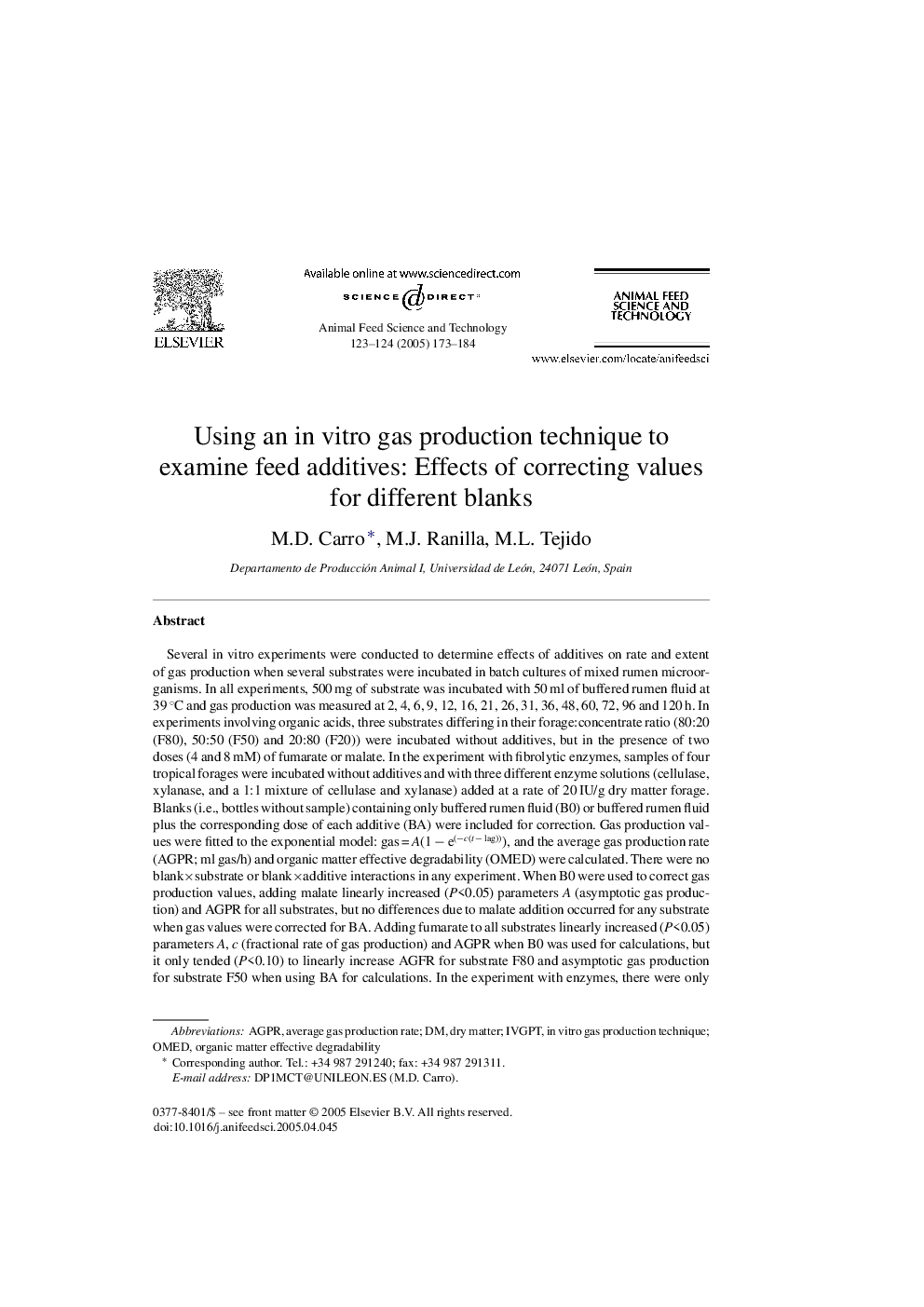| Article ID | Journal | Published Year | Pages | File Type |
|---|---|---|---|---|
| 9916609 | Animal Feed Science and Technology | 2005 | 12 Pages |
Abstract
Several in vitro experiments were conducted to determine effects of additives on rate and extent of gas production when several substrates were incubated in batch cultures of mixed rumen microorganisms. In all experiments, 500 mg of substrate was incubated with 50 ml of buffered rumen fluid at 39 °C and gas production was measured at 2, 4, 6, 9, 12, 16, 21, 26, 31, 36, 48, 60, 72, 96 and 120 h. In experiments involving organic acids, three substrates differing in their forage:concentrate ratio (80:20 (F80), 50:50 (F50) and 20:80 (F20)) were incubated without additives, but in the presence of two doses (4 and 8 mM) of fumarate or malate. In the experiment with fibrolytic enzymes, samples of four tropical forages were incubated without additives and with three different enzyme solutions (cellulase, xylanase, and a 1:1 mixture of cellulase and xylanase) added at a rate of 20 IU/g dry matter forage. Blanks (i.e., bottles without sample) containing only buffered rumen fluid (B0) or buffered rumen fluid plus the corresponding dose of each additive (BA) were included for correction. Gas production values were fitted to the exponential model: gas = A(1 â e(âc(t â lag))), and the average gas production rate (AGPR; ml gas/h) and organic matter effective degradability (OMED) were calculated. There were no blankÃsubstrate or blankÃadditive interactions in any experiment. When B0 were used to correct gas production values, adding malate linearly increased (P<0.05) parameters A (asymptotic gas production) and AGPR for all substrates, but no differences due to malate addition occurred for any substrate when gas values were corrected for BA. Adding fumarate to all substrates linearly increased (P<0.05) parameters A, c (fractional rate of gas production) and AGPR when B0 was used for calculations, but it only tended (P<0.10) to linearly increase AGFR for substrate F80 and asymptotic gas production for substrate F50 when using BA for calculations. In the experiment with enzymes, there were only subtle differences between results obtained using B0 and BA for correcting gas values. With both blanks, treatment of forages with cellulase and the cellulase:xylanase mixture decreased (P<0.05) lag and increased (P<0.05) OMED for all forages. Results demonstrate that using different blanks for correction purposes can produce different calculated effects between treatments, and therefore, can change interpretation of results, but this effect depends on the type of additives examined.
Keywords
Related Topics
Life Sciences
Agricultural and Biological Sciences
Animal Science and Zoology
Authors
M.D. Carro, M.J. Ranilla, M.L. Tejido,
